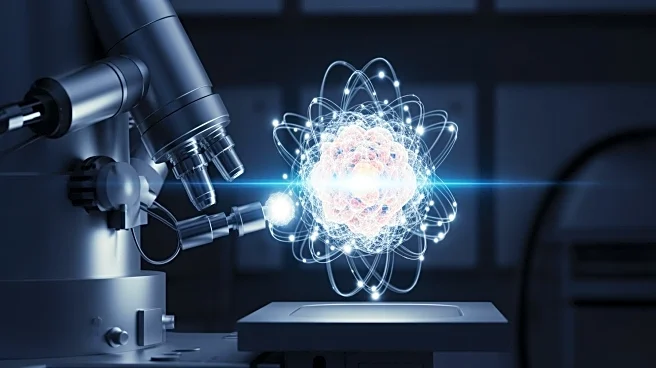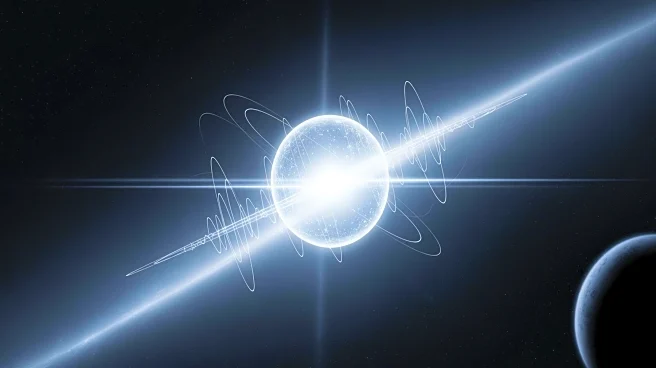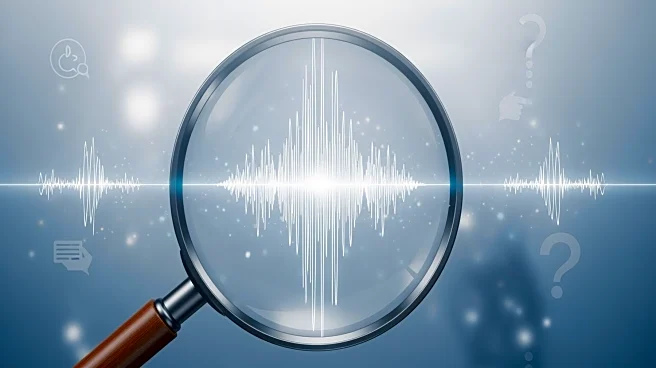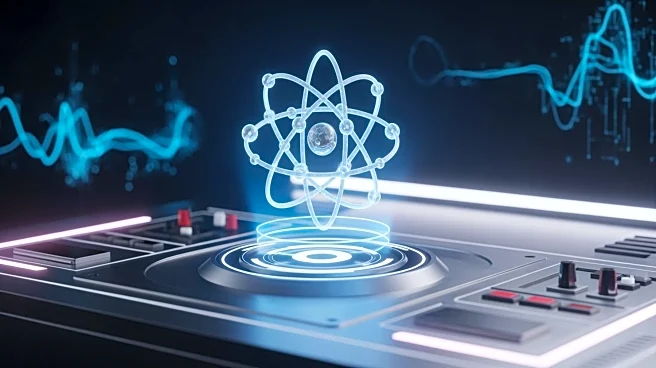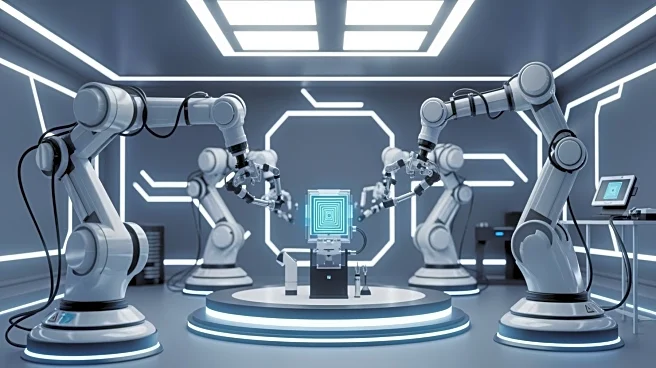What's Happening?
Physicists at MIT have developed a novel technique to explore the interior of an atom's nucleus by utilizing the atom's own electrons as 'messengers.' This method, detailed in a recent publication in Science, involves measuring the energy of electrons orbiting
a radium atom that is chemically bonded to a fluoride atom, forming radium monofluoride. By using this molecular environment as a substitute for a particle collider, the researchers were able to confine the radium atom's electrons, increasing the likelihood of them passing through the nucleus. This approach offers a compact, table-top alternative to traditional experiments that require large accelerators to investigate nuclear interiors. The study, led by Ronald Fernando Garcia Ruiz and his team, aims to map the nuclear 'magnetic distribution' and address fundamental questions in cosmology, such as the matter-antimatter imbalance in the universe.
Why It's Important?
This breakthrough has significant implications for the field of physics, particularly in understanding the fundamental symmetries of nature. The ability to probe the nucleus using a table-top method could revolutionize how nuclear physics experiments are conducted, making them more accessible and less resource-intensive. The research could also provide insights into why the universe contains more matter than antimatter, a question that challenges the current understanding of the Standard Model. By focusing on radium, which has an asymmetric, pear-like nucleus, the study could amplify signals of symmetry violation, potentially leading to new discoveries about the forces that govern the universe.
What's Next?
The MIT team plans to further refine their technique to map the distribution of forces inside the nucleus. Future experiments will involve cooling the radium-containing molecules and controlling the orientations of their nuclei to precisely map their contents. This could enhance the search for violations of fundamental symmetries, providing deeper insights into the nature of matter and the universe. The research is supported by the U.S. Department of Energy, indicating continued interest and investment in this promising area of study.
